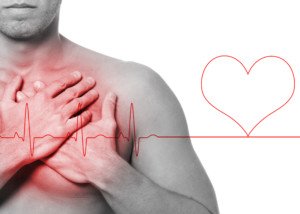
If you’re having so many PVCs that you measure their frequency by the hour, this may have you fearful that you’re afflicted with frequent PVCs.
Per hour, per day, how many premature ventricular contractions you have will vary when compared to others who believe they too suffer from “frequent” or “a lot” of these annoying – and sometimes very scary – heartbeat sensations.
But thinking that you have frequent or a lot of PVCs can be a very subjective interpretation.
Electrophysiologist’s Answer
So I asked an electrophysiologist the big question. Just how many PVCs per day or hour must one have in order for the condition to be considered frequent as opposed to occasional?
“Frequent PVCs are defined as having 15,000 or more per day, whereas five to ten PVCs per hour (or less) are considered occasional,” says Andrea Natale, MD, cardiac electrophysiologist and executive medical director of the Texas Cardiac Arrhythmia Institute at St. David’s Medical Center.
So, 15,000 PVCs per day = on average, 625 per hour, if you include the hours during sleep.
Frequent PVCs, then, would mean, on average, 10.4 of these “skipped” or “extra” beats every minute.
Keep in mind that someone may go many minutes or even a few hours without having a single premature ventricular contraction, but then over 2,000 occur in just the next hour alone.
Thus, the 24-hour tally won’t be evenly spread out among 24 hours.
This is why the concept of frequent vs. occasional is measured per day rather than per hour.
Five to 10 PVCs per hour, on the other hand, are, as Dr. Natale says, considered an occasional occurrence.
This will be surprising to many people who have health anxiety over their PVCs, because from their frightened point of view, five to 10 “flutters” per hour seems excessive.
But imagine having 10 PER MINUTE.
According to the math, occasional PVCs means 120 to 240 per day. If you’ve documented a lot more than this, but also a lot less than 15,000, you’re somewhere in the range of moderate frequency.
High frequency would mean you’d be feeling your heart jumping, thumping, fluttering or skipping nearly constantly every waking moment (10.4 or more per minute) or for large chunks of time out of the day.
Hopefully, this math will put things in perspective for you. But there’s a little more to consider.
“The prevalence of PVCs increases with age,” says Dr. Natale, “with less than one percent of ambulatory ECG recordings demonstrating PVCs in those younger than 11 years of age, compared with more than 69 percent in those 75 years of age or older.”
Dr. Natale’s greatest reward is restoring his patients to a life free of cardiac arrhythmia. He pioneered a circumferential ultrasound vein-ablation system to correct atrial fibrillation and performed the procedure on the world’s first five patients.
greatest reward is restoring his patients to a life free of cardiac arrhythmia. He pioneered a circumferential ultrasound vein-ablation system to correct atrial fibrillation and performed the procedure on the world’s first five patients.
 Lorra Garrick has been covering medical, fitness and cybersecurity topics for many years, having written thousands of articles for print magazines and websites, including as a ghostwriter. She’s also a former ACE-certified personal trainer.
Lorra Garrick has been covering medical, fitness and cybersecurity topics for many years, having written thousands of articles for print magazines and websites, including as a ghostwriter. She’s also a former ACE-certified personal trainer.
.

























